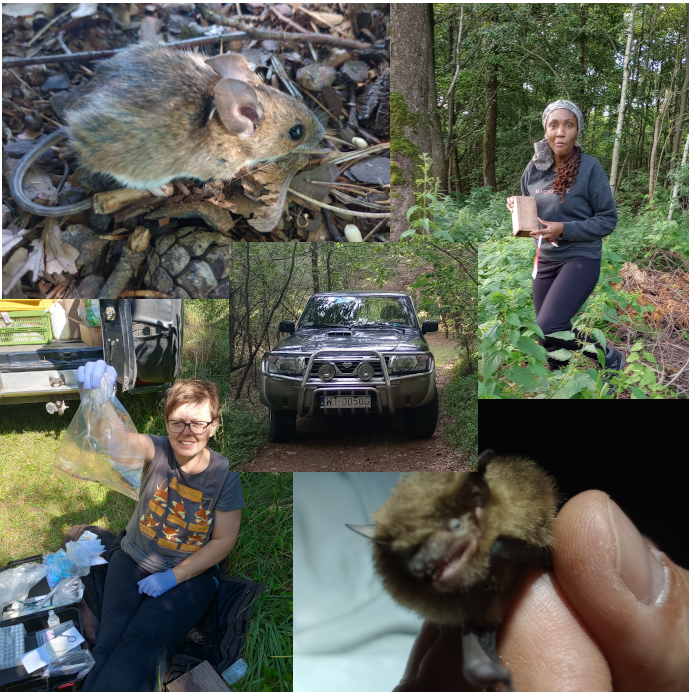NCN grant 2020/37/B/NZ9/01056
“Metabarcoding approach for evaluating the role of micromammals (rodents and bats) as a zoonotic reservoir”
The increasing frequency of zoonotic disease events underscores a need to develop forecasting tools toward a preemptive approach to outbreak investigation. As the recent Covid-19 outbreak has shown, pathogen surveillance is crucial for monitoring and preventing potential pathogen spill-overs from wildlife to humans, as majority of the emerging human pathogens are zoonotic. Models predict that zoonotic outbreaks will intensify in future, and Eastern Europe has been recognized as a hotspot for zoonotic mammal hosts. Among them, bats and rodents, that harbour the highest number of zoonotic pathogens. Many bat and rodent species reach high densities, they live close or within human settlements, often inhabiting cellars, attics, or outbuildings what facilitates transmission. Often, they are also city-dwellers, although the risk of animal-borne diseases in urban areas is poorly understood.
In this project, we sample rodents and bats living close to humans: in city parks, suburbs, farms etc., and using metabarcoding, we characterize their pathogen fauna, including bacteria, nematodes, viruses, and protists.
Fieldwork
Rodents: 33 locations, 320 animals, > 500 samples (blood, faeces, urine).
Bats: 124 animals, ~ 300 samples (blood, urine, saliva, faeces).

Sampled locations:
